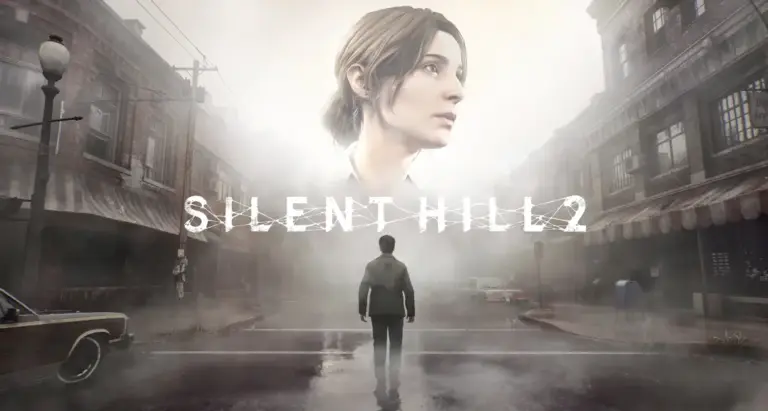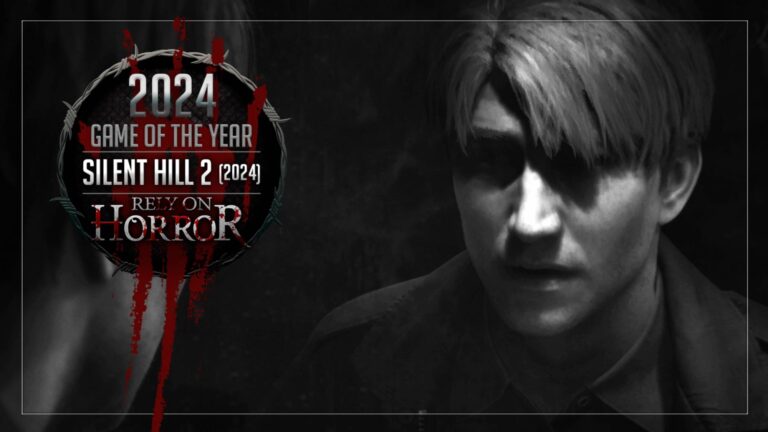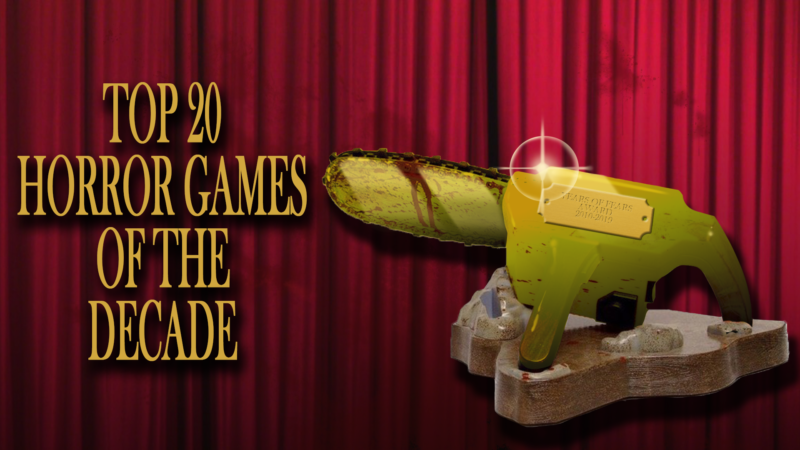
Now that the decade has drawn to a close, we all have a lot to look back on. Our lives have all changed pretty drastically in that time, whether it’s a new job, graduating from school, a relationship — who knows. Just like us, so too has the gaming industry changed in those ten years. We went from what could have arguably been called a horror game drought in the late 00s-early teens to the greatest horror game revolution the industry has seen since the PlayStation 2. As such, it’s worth taking the time to gaze back upon the very best of what we’ve gotten to enjoy over the past ten years and hope that the next ten will be able to grant us as bountiful a supply of memories and scares. These are our picks for the best horror games of the last decade, along with runner-ups that are good fallbacks in case you’ve already played the top pick!
2010: Alan Wake (Xbox 360/Xbox One/PC)
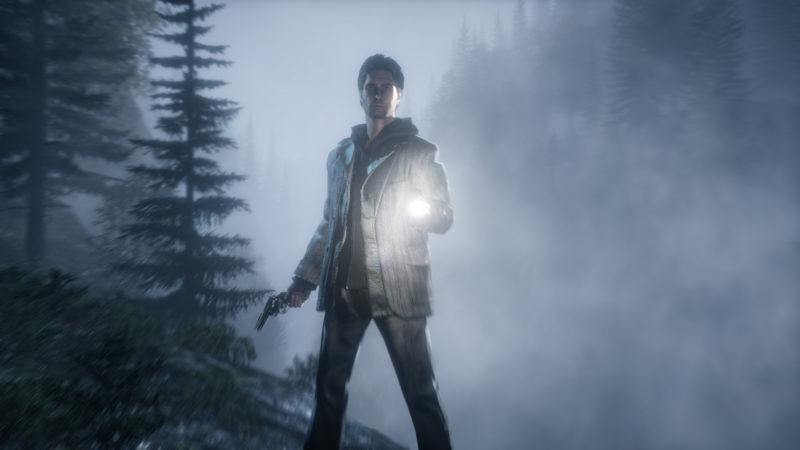
As Resident Evil began to drift further and further away from survival horror, its genre of over-the-shoulder horror games still hadn’t quite cracked the AAA market. 2008’s Dead Space was fantastic, if a little rough around the edges, and shared that year with the divisive and clunky Silent Hill: Homecoming. It was looking like the action-horror combo Resident Evil 4 had mastered might not be as quantifiable as we thought. A mere two years later Alan Wake was released by developer Remedy Entertainment, showcasing a master-class mix of Resident Evil 4, Twin Peaks, and Stephen King inspirations that it wore on its sleeve with pride. Establishing an immediately fun and engaging world of mystery and intrigue, Alan Wake wove a mind-bending tale that traveled the far reaches of an author’s imagination come to haunt him that immediately captured the hearts of horror enthusiasts. Mixing Resident Evil 4‘s combat (with a dose of move-and-shoot), ObsCure‘s flashlight-vs-darkness mechanics (improved with more involved elements and clearer feedback), taking the fight to the darkness was incredibly satisfying and kept you coming back even after completing the story. The game’s DLC only added to the terror with more and more bizarre concepts born of Wake’s demons.
Despite releasing a decade ago, Alan Wake is just as much of an adventure today as it was in 2010. Sadly, the title never garnered the attention it deserved and was a financial disappointment. A stand-alone micro-sequel released two years later, Alan Wake’s American Nightmare, which was praised for maintaining the core game’s combat and flair. Unfortunately, it simply wasn’t enough to be a satisfying note to leave the series off on. As of the time of this writing, it remains the final word in the story. That said, Remedy Entertainment secured the rights for Alan Wake recently; their latest title, sci-fi spook-fest Control, appears to be returning to Alan Wake‘s shadowy hell.
2010 Runner Up — Deadly Premonition (Xbox 360/Xbox One/PlayStation 3/PC/Switch)
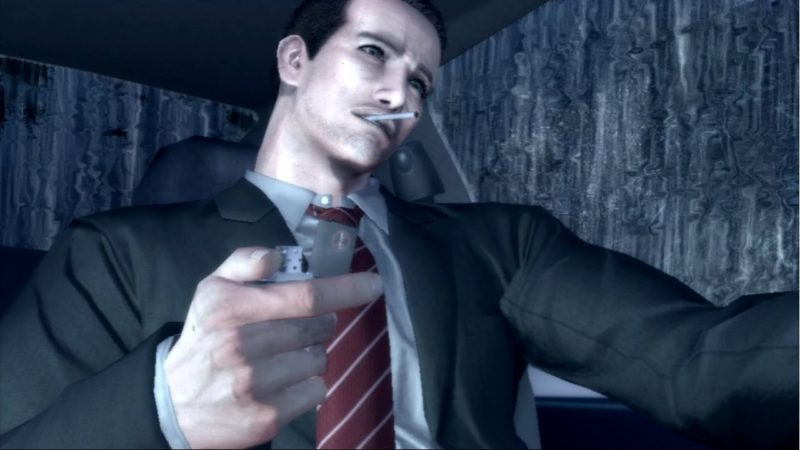
If we are going to describe Alan Wake as a cult favorite, then Access Games’ Deadly Premonition is the Star Wars: Holiday Special of cult favorites. Bizarre, broken on many technical levels (more so with each passing port it seems), ugly as sin, and clunky as hell, Deadly Premonition is one of the most genuine and endearing games on its original platform. Creator Sweary65 captured the hearts and imaginations of a tremendous number of players and only seems to be gaining more love with each passing year. Despite all of its problems, the story and charm has managed to keep the game alive for an entire decade. The momentum isn’t stopping, either, as Deadly Premonition 2 sets its sights on a 2020 release. If you can make it past Deadly Premonition‘s faults, you might find yourself among the many, many fans that adore this game and place it among their all-time favorites.
2011: Dead Space 2 (Xbox 360/PlayStation 3/PC/Xbox One)
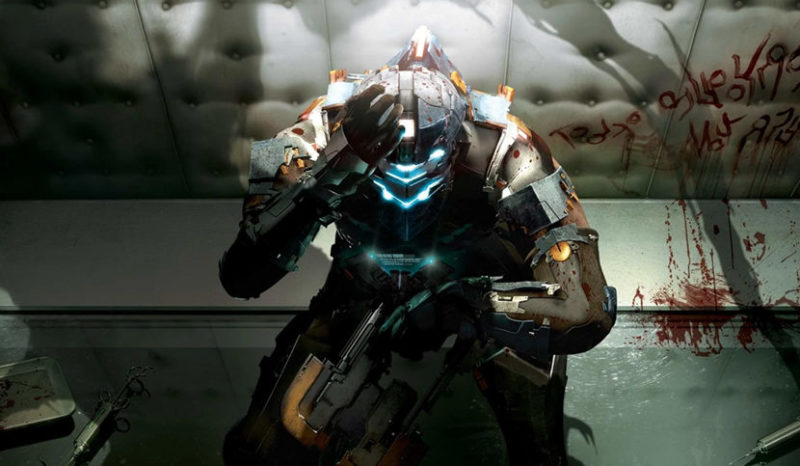
While 2008’s Dead Space could be described as being a bit rough around the edges, developer Visceral Games came in with a belt sander and smoothed Dead Space 2 out into a perfect sphere. Horrific, anxiety-inducing, action-packed, and breathtakingly beautiful, this game is a masterclass in exactly how a sequel ought to be done. Picking up years after the vicious and bloody horrors aboard the USG Ishimura, we find series star Isaac Clark trapped aboard the Sprawl, a Saturn-based orbital space colony with thousands of deadly Necromorph beasts. Zeroing in on what made the first game’s Resident Evil 4-inspired combat so great and going all-in on a more involved, personal story, Dead Space 2 knew what it wanted to be and nailed it — easily crafting the best experience in the entire franchise. On top of all of this, Dead Space 2 also included a 4v4 multiplayer mode, offering the only chance in the series to play as one of the deadly Necromorph terrors.
A single-player DLC chapter would release later, connecting to the oft-forgotten, but pretty damn good, spin-off Dead Space: Extraction, and offering up even more of what made the main game great. While the franchise would sadly go on to stumble, then die, after the release of 2013’s Dead Space 3, there’s no denying that this middle child was far and away one of the best games of its console generation, not to mention the decade. We gave it our very first game of the year, as well.
2011 Runner-up: Alice: Madness Returns (Xbox 360/Xbox One/PC)
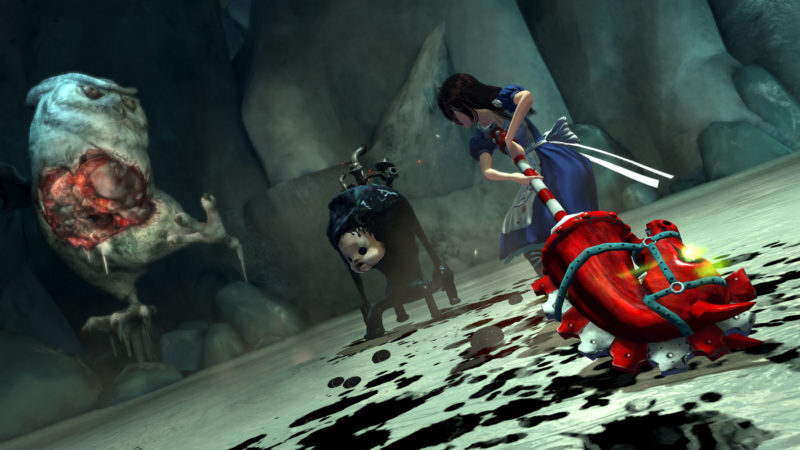
While we never got the chance to give this title an official review, Alice: Madness Returns took a lot of risks to return to the twisted wonderland established in the then decade-old American McGee’s Alice. The delightfully demented imagery and refined gameplay offered the vision that was no doubt intended by the original, and the varied locations throughout Wonderland provided a delightful landscape to relish. Focusing even further on Alice Liddle’s troubled mental state and the damage dealt by the death of her family, Madness Returns left behind a cult following and hopes that an Alice 3 may materialize someday (although chances are very slim, sadly). There are no centaurs in London, and nothing else out there quite like Madness Returns.
2012: Telltale’s The Walking Dead (Everything)
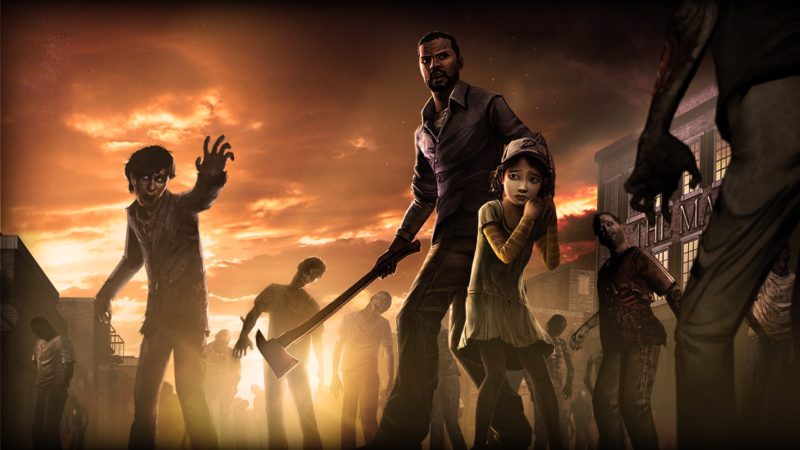
Few games on our list could be called phenomenons to quite the degree that this was. Mostly known for poker games and a few movie/television tie-in games, as well as the brilliant Sam & Max series, Telltale effectively turned the industry’s preconceptions of narrative-focused games on its head with The Walking Dead. Focusing on the journey of convict Lee Everett and orphan-of-the-apocalypse Clementine, The Walking Dead (post-fame known as Season One) told an impactful and gut-wrenching tale that would leave fans sobbing by the end. Over the course of five episodes, the bond between players and characters outgrew the brand the game was tied to, and to this day you’d be hard-pressed to find a player — of any stripe — who wouldn’t immediately smile in bittersweet fondness for their time spent with this game. Spawning three more games and establishing Telltale as a force to be reckoned with when it came to gaming narratives, The Walking Dead could probably be an easy contender for simply being the best game of the decade.
Sadly, Telltale’s The Walking Dead also managed to even outgrow its studio, which collapsed suddenly and unexpectedly around midway through its final season. The final season managed to release as planned with the help of rights holder Skybound Entertainment, and Telltale has since been re-established under new management. It remains to be seen if the new Telltale has a future, but the recently announced The Wolf Among Us Season 2 hopefully builds a path to a bright future. Telltale’s The Walking Dead received our 2012 Horror Game of the Year.
2012 Runner-up: Resident Evil: Revelations
(3DS/Xbox 360/PlayStation 3/Xbox One/PlayStation 4/Switch/PC)
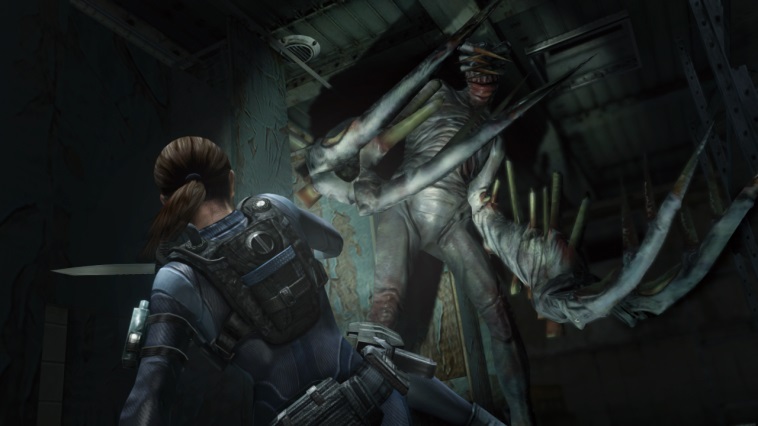
While I would love to give this to Silent Hill: Downpour, the final console release in that series, Resident Evil‘s third portable outing just barely edges it out. While the game would release in the middle of a very confused time for the series, it’s the only Resident Evil game of that year that has managed to maintain longevity of any kind. Revelations led the charge for two other 2012 releases, Operation Raccoon City and Resident Evil 6. Pushing the 3DS to its limits with a shockingly gorgeous presentation and console-quality game design and execution, Revelations marked Capcom’s first attempt to toe-dip back into the world of survival horror. To be fair, in retrospect it didn’t quite manage to break free of the bonds established by Resident Evil 5 (and arguably being even more over-the-top in places), there’s no denying what a well-made game it is. Complimenting its gigantic single-player experience is the online co-op Raid Mode, an RPG-infused twist on The Mercenaries from Resident Evils 4 and 5.
Revelations would help ease Capcom back into the idea to maybe make the series scary again and has since been ported to damn near everything. Followed by a sequel in 2015 and influencing aspects of RE7 and REmake 2 (and from the looks of it, REmake 3), the monumental impact this little 3DS game has had on the series cannot be overstated.
2013: The Last of Us (PlayStation 3/PlayStation 4)
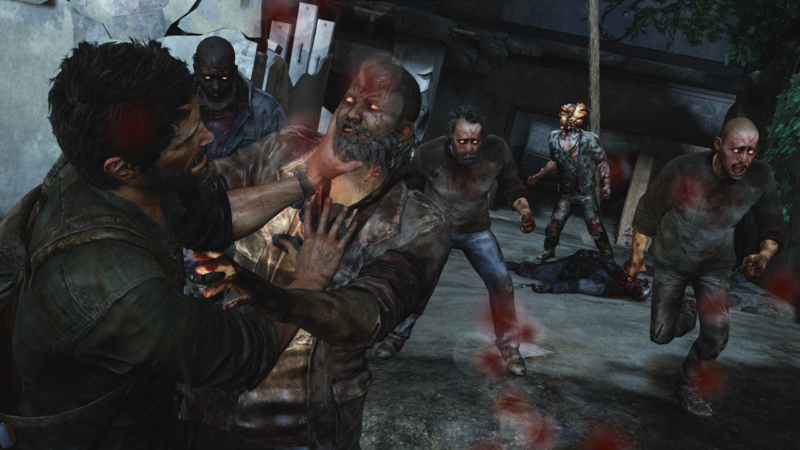
If The Walking Dead established that games could have a profound impact with storytelling, The Last of Us solidified that concept. Uncharted developer Naughty Dog jumped headfirst into the action-horror scene with what would become one of the seminal PlayStation 3 games, leading the twenty-teens into a new era of horror games. Following a similar father figure/surrogate daughter combo to The Walking Dead, The Last of Us‘ Joel and Ellie are among the PlayStation family’s biggest icons — bonded as much to the audience as they are to each other. From the word go, its shocking and emotionally draining narrative sees us travel across a post-apocalypse America with deadly fungal-infested zombies around every corner. Borrowing heavily from Resident Evil 4‘s gunplay (I know that keeps coming up but seriously it even uses the same HUD) and spicing it up with stealth and crafting, The Last of Us is a blast to cruise through regardless of its story. On top of that, The Last of Us includes a multiplayer mode that might be the best of all of Naughty Dogs’ offerings.
Just before this generation closes out with the release of PlayStation 5 and Xbox Series X next Holiday, The Last of Us Part 2 will be delivering another blow on our emotions next May. It remains to be seen just what kind of impact that title will have, but odds are it will be major.
2013 Runner-up: Outlast (Xbox One/PS4/PC/Switch)
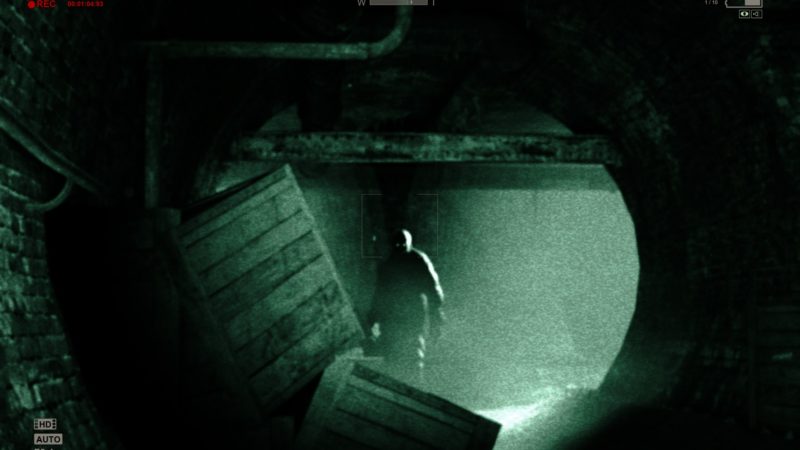
While the hide-and-seek genre might have worn itself a little too thin in the years following, there’s no denying the massive impact Outlast had on the industry. Building off of the first person “hide and seek” horror subgenre established by titles like Slender and Amnesia, Outlast perfected it into a delightful Halloween Haunted House experience. Packed full of memorable scares, haunting art direction, and a wonderfully twisted host of antagonists, Outlast took a budding genre and allowed it to take a seat on the Jedi council of horror. Its DLC only offered more of its signature top-shelf dark ride through terror, and a few years later Outlast 2 attempted to grow the mostly down-to-Earth horror of the original into something more surreal. While the sequel has been significantly more divisive than its predecessor, the critiques haven’t slowed developer Red Barrels down one bit; The Outlast Trials is set to bring co-op nightmares to our daydreams in the semi-near future. We’re eagerly awaiting more information at this time.
2014: Alien: Isolation (Xbox 360/PlayStation 3/Xbox One/PlayStation 4/PC/Switch)
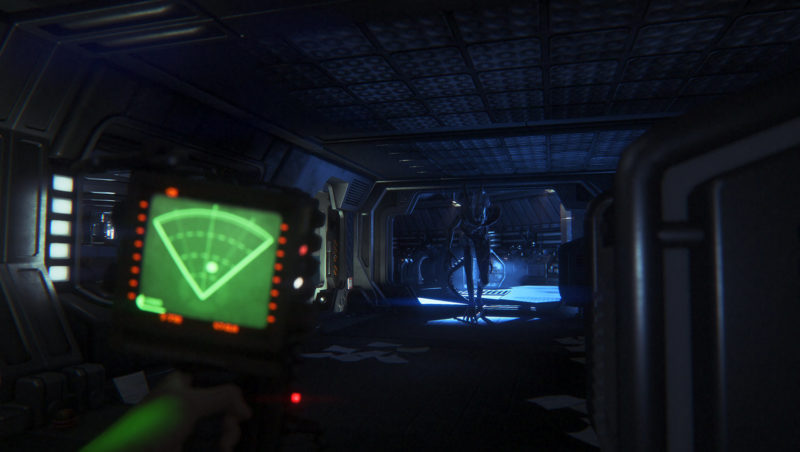
It’s a rare joy when a movie-licensed game manages to be worth playing at all, but Alien: Isolation was able to blow past that stereotype into one of the best horror games of the decade. A master-class in how to adapt from a film’s identity, Isolation bleeds love for the source material in every pixel. Everything in its world is designed to match the original 1979 film as closely as possible- not just visually but tonally, audibly, and aesthetically- creating one of the rare cases of truly feeling as if you were inside the film. Blending survival horror item management and exploration with hide-and-seek terror, Isolation keeps the player in a constant state of high-anxiety that refuses to let up until the credits role. The game would be bad enough with just the panicked survivors who shoot on sight and the murderous Working Joe automatons, but the titular Alien is what truly manages to steal the show. This adept predator stalks Sevastopol station relentlessly, creating a deadly one-hit-kill game of cat and mouse (let’s be real here, it’s more like Siberian tiger and mouse). There are few horror games I can say truly made me genuinely afraid, and Alien: Isolation is the only horror game that has ever managed to make me stop playing out of fear. It’s that good, friends.
2014 Runner-up: The Evil Within (Xbox 360/PlayStation 3/Xbox One/PlayStation 4/PC)
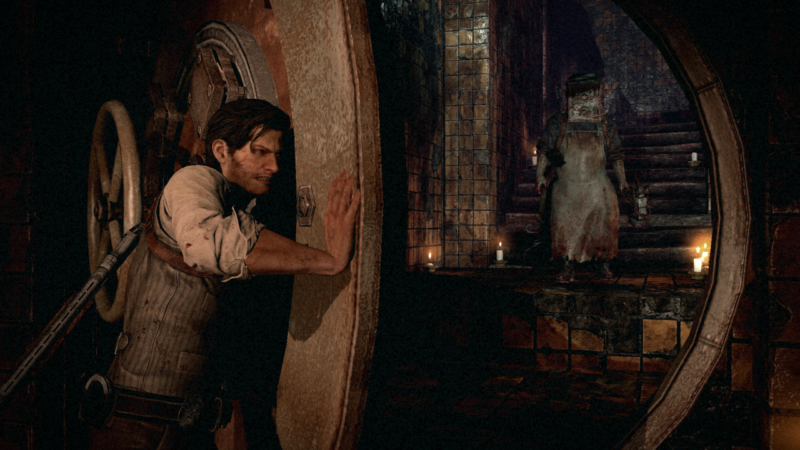
In a time when Resident Evil was at its lowest point and Silent Hill was suffering its final nail thanks to the messy Kojima/Konami split, the future of classic survival horror felt very bleak. At that critical moment Resident Evil creator Shinji Mikami and his new studio Tango Gameworks stepped in to stem the bleeding with The Evil Within, a love letter to classic survival horror games mixed with a healthy dose of modern action stylings. While its story is a tick below ‘completely incomprehensible’, its hardcore survival horror item conservation in the face of a never-ending onslaught of “Haunted”- a twisted take on zombies that take heavy inspiration from RE4‘s Ganado- The Evil Within is as addicting as it is terrifying. Captivating art direction and dedication to atmosphere really sells The Evil Within, and the wonderfully blood-soaked hellscape of its world leaves you desperate for more.
A triple-threat of DLC twisted the gameplay available in the main story into something worth trying out just on its own, even letting players step into the workboots of the game’s most iconic creature — the Executioner. The sequel a few years later polished up some of the original title’s edges, telling a much more personal story even more psychologically tormented than the first. Sadly, poor sales may have ended the franchise, and Mikami has moved on to Ghostwire Tokyo, but The Evil Within 2 makes an effort to try and finish its story (although the tie-in comic leaves the door very much open for a third title).
2015: Bloodborne (PlayStation 4)
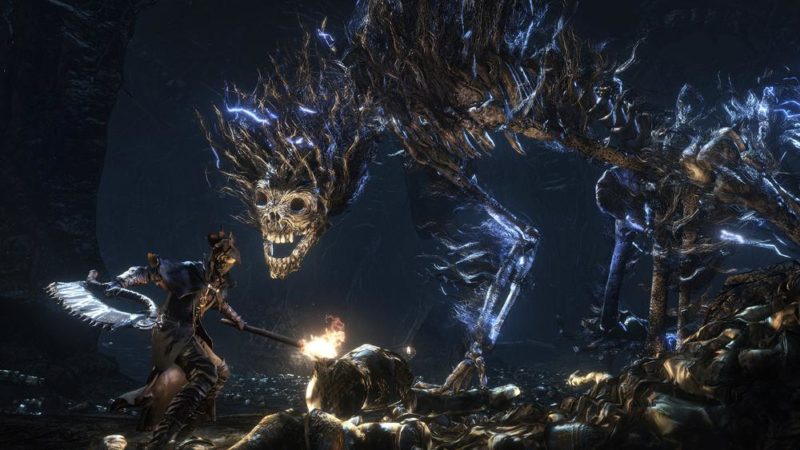
Horror isn’t all about jumpscares and gore; sometimes it’s about tension, ambiance, and that cozy feeling of being well and truly haunted. So it is with Bloodborne, our 2015 GOTY. From Software’s iteration of the Souls formula to add pistols and remove magic pays off in a major way as you take on the eldrich nightmares of Yharnam as a hunter lost in a sea of disease and mutation. Simply exploring the deliciously detailed hellscape and encountering newer and more ferocious beasts along the way blends trepidation and a deep need to press further in a way few games have managed to capture. Downright addicting, Bloodborne bridges the gap between the “prepare to die” feeling of Dark Souls and the inventory-heavy stylings of survival horror that will feel both familiar and daunting to fans of either. Haunting, macabre, and dripping in visceral fluids, it’s very hard to be into horror and not at the very least enjoy the aesthetic and atmosphere. Topping it off with a bizarre and disturbing tale that unfolds into arguably one of the most unexpected mysteries you could imagine given the setting, Bloodborne is a modern masterpiece that has no equal, outshining its sister series in every way possible. We’ve enjoyed it since awarding it our 2015 game of the year award, and will continue to do so for many years to come.
2015 Runner-Up: Until Dawn (PlayStation 4)
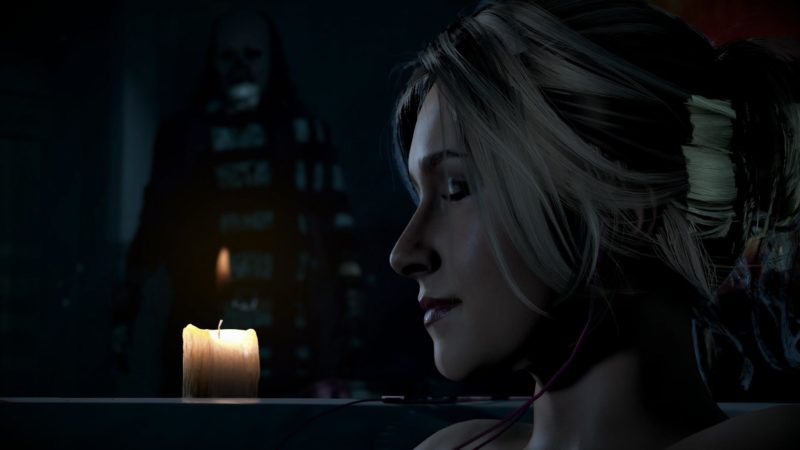
In the wake of Telltale’s The Walking Dead, the old-school Sierra-style point and click adventure has had something of a resurgence. Obviously not quite as archaic as those old games (although they’re still fun), modern takes on that genre have been becoming more and more advanced. None more so perhaps than Supermassive’s Until Dawn, a grueling mash-up of horror movie tropes wrapped in the gory bow of a dynamic butterfly effect choice system. Exploring multiple facets of horror across its run time, Until Dawn almost feels like an interactive season of American Horror Story, with a new layer of terror added every few hours. A thrilling mystery unravels as you attempt to get as many characters (who can and will suffer permadeath and the hands of a careless choice) out alive as possible, this bloody adventure is fun both as a creep-fest and as something to enjoy with friends arguing about what choice to make. This unintended party night aspect may have informed Until Dawn‘s follow up, Man of Medan, which has a co-op mode especially for enjoying with a couch full of friends.
The story of Until Dawn didn’t finish with the 2015 game, of course. It was revisited as an aesthetic for the carnival coaster VR shooter Until Dawn: Rush of Blood (which, while still packing scares, is more just for fun and doesn’t actually connect canonically) and then expanded upon with another VR game, The Inpatient. While that title didn’t receive much critical acclaim (we never got around to reviewing it, but the reception was generally somewhat negative) Until Dawn set a new bar for what could be done in this genre. Readers like you voted, and Until Dawn won our very first Community Game of the Year award, and its legacy will most likely be carrying on into the next generation of games.
2016: Inside (Xbox One/PlayStation 4/PC/Switch/iOS)
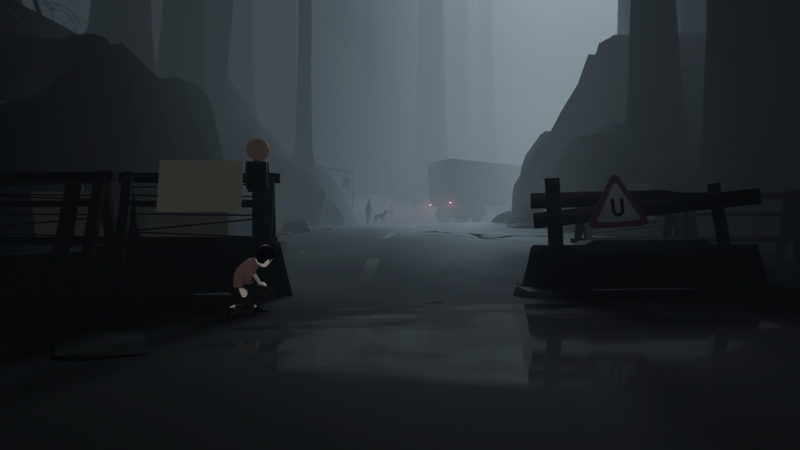
If you weren’t around for the era of Xbox 360’s Summer/Winter of Arcade events circa 2008-2013, you might be unaware of the splash 2010’s Limbo made. Released amongst titles like Hydro Thunder Hurricane and Monday Night Combat, Limbo was unlike anything else available on the market. With striking black and white visuals, a haunting atmosphere that hid sinister intent behind every shadow, and a vague story that left much of its darkest concepts to the player’s imagination, Limbo left an impression that can’t be shaken off even to this day. While it’s now available on pretty much everything, it was the game to get on Xbox 360’s (now defunct) XBLA. Why am I talking about all of this? Because it sets the stage for developer Playdead’s next title, 2016’s Inside.
While it doesn’t retain Limbo‘s striking visuals and the story is a smidge more direct, Inside explores the same side-scroller horror puzzling of its predecessor. Set in an austere kind of dystopian future that sees mankind subjugated by some unknown overlords (are they aliens, machines, the government?), we play as another small boy attempting to escape to safety despite the world around him. Sneaking past a variety of horrifying deaths and solving complex Rube Goldberg puzzles to reach new areas, Inside is a follow-up to Limbo in the same way Hot Fuzz is a follow-up to Shaun of the Dead. The games explore the same concepts through the lens of a different genre and style. If you love haunting, introspective experiences that are just as challenging as they are mysterious and oppressive, Inside might be your cup of tea and certainly one of the few of it’s kind over the past decade.
2016 Runner-Up: Anatomy (PC)
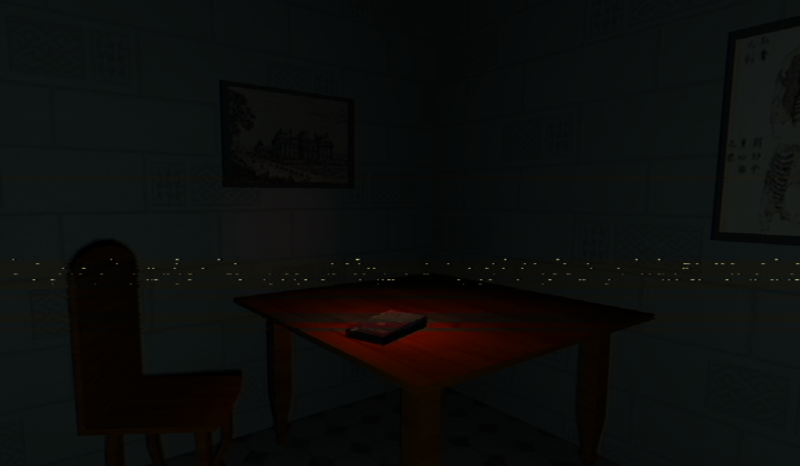
While we never had an official review for Anatomy, it won our Community GOTY for 2016. Immersive and eerie, indie developer Kitty Horrorshow delivers an experience just this side of Silent Hill as you explore a dark and foreboding house. Focusing on ambiance and atmosphere over monsters jumping out and screaming at you, this retro-PS1 style haunt sees the player unraveling a mystery by finding audio recordings throughout a suburban house. This is definitely one to play with the lights out and your headphones on, and for a mere $2.99 (or more, if you like!) it’s an experience you can’t pass up.
2017: Resident Evil 7: Biohazard (Xbox One/PlayStation 4/PC/Switch)
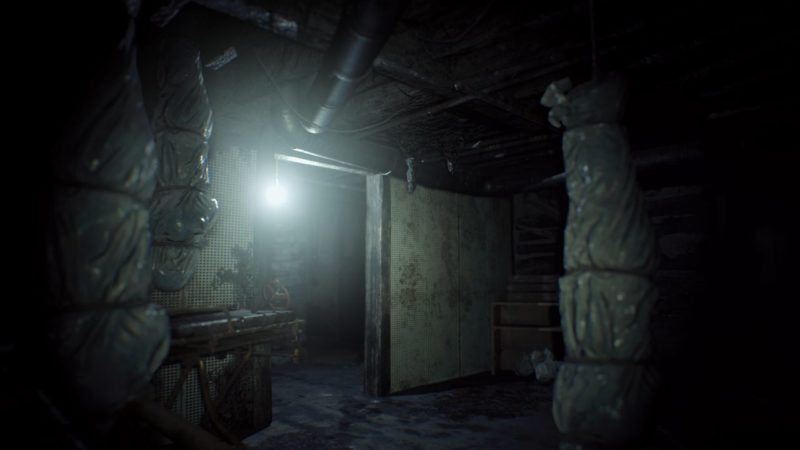
There has been no greater joy as a horror fan than to see the incredible bounce back the Resident Evil franchise has made, and it all started here. Resident Evil 7 marked the series’ first real attempt at horror (that completely avoids action in the main game, unlike Revelations which straddles the line) since 2004’s Outbreak File #2, and it does it with skill and ease not seen since the olden days of survival horror. While the shift from third- to first-person was a smidge divisive, the title has no less become lauded as one of the best entries in the series, skyrocketing to the third best selling title in the franchise. Pulling heavily from the original 1996 classic and infusing new twists on old-school designs, RE7 pushes past pretenders to the throne to take Resident Evil‘s rightful seat at the head of the survival horror table.
On top of all of this, a VR mode for PlayStation 4 users creates an out-of-this-world horror experience that’s pants-shittingly terrifying from beginning to end. There’s also a treasure-trove of DLC that adds multiple spins on the design that keep you coming back for more, from a horde mode gauntlet and a deadly game of poker, to a free chapter that closes the book on the main story and an action-packed melee-athon that sees the horror tossed out the window for a rip-roarin’ good time. RE7 is easily one of the best horror games of this decade, and to miss it is to miss the very best of what the franchise has offered in well over that decade.
2017 Runner-Up: Hellblade: Senua’s Sacrifice (Xbox One/PlayStation 4/PC/Switch)
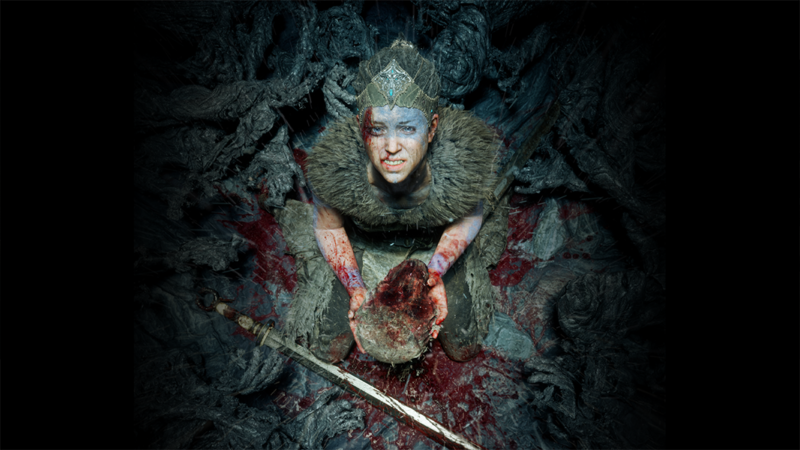
While the horror genre is often inexorably chained to the label of “psychological”, few really do anything with that beyond just having the creatures in the game have some deeper meaning you can suss out based on their design. Hellblade: Senua’s Sacrifice goes the extra mile by making the psychological aspect of its terrifying adventure the main focus of not just the story and gameplay, but the experience, if that makes sense. Attempting to shed a realistic and sympathetic light on real-world psychosis, the titular Senua suffers from visions and voices that make our terrifying knee-deep wade through hell difficult to fully get a grip on. Fleshed out with Platinum Games’ trademark combat, Hellblade is truly one of those games that could be described as a groundbreaking experience. Hell, it’s something no “best of the decade” list would be complete without, horror or no.
Fans of the game are eager for more, and the recently announced (and shockingly gorgeous) Hellblade 2: Senua’s Saga looks to deliver even more. Currently slated for a Holiday 2020 release as a launch title for Microsoft’s Xbox Series X (and presumably PC, as Microsoft has been clear that the SX won’t have exclusives at launch), the journey is far from over.
2018: Remothered: Tormented Fathers (Xbox One/PlayStation 4/PC/Switch)

It is occasionally difficult to recapture what made something great in the past with the mindset of the present. So few games have been able to transition the ideas of classic games into something more modern, even when the creators behind them remain involved (Yooka-Laylee, Mighty No.9). 2016’s Nightcry was a far cry from the revival of the classic Clock Tower franchise fans had hoped for (I reached out to our reviewer, CJ Melendez for comment, who simply replied “Fuck Nightcry“), but one such title managed to accomplish it without the inclusion of franchise alumni like Hifumi Kono. Remothered: Tormented Fathers uses Clock Tower as a jumping-off point for a new adventure, using the simpler stylings of classic survival horror to build on with a modern flair. Fans of quieter, more ambient horror will feel right at home as they explore the decrepit mansion in search of answers regarding a missing girl.
Our first sweep of both GOTY and Community GOTY, Remothered became an instant classic, fitting right in amongst the bigger titles of this past decade. Our fingers are crossed that Remothered: Broken Porcelain is the follow-up it deserves when it releases in 2020.
2018 Runner-Up: The Missing: J.J. Macfield And The Island Of Memories (Xbox One/PlayStation 4/PC/Switch)
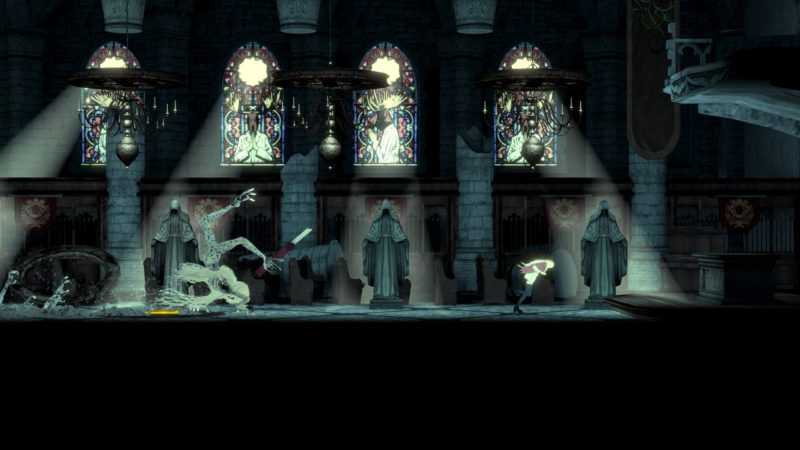
While the 2D horror genre might be a smidge crowded, that fact may actually help the best titles within this particular niche stand out. Hidetaka “Swery 65” Suehiro (of Deadly Premonition fame) stands a mark above the rest, exploring deeper themes than most purported “psychological horror”, and is one of the few cases of a horror game (hell, any game) with a lead LGBT hero and story focus. While the game is short, the punch it packs has made it a fan favorite in many of the same ways as Swery’s other works, and the lasting impact of its themes has been drawing in new fans ever since its release. It might not ever achieve the same long-standing fan base that Deadly Premonition has over its lifespan this decade due to being even more niche, that’s perhaps for its benefit. Achieving something truly unique can be an uphill task, and this game pulls it off well.
2019: Resident Evil 2 (Xbox One/PlayStation 4/PC)
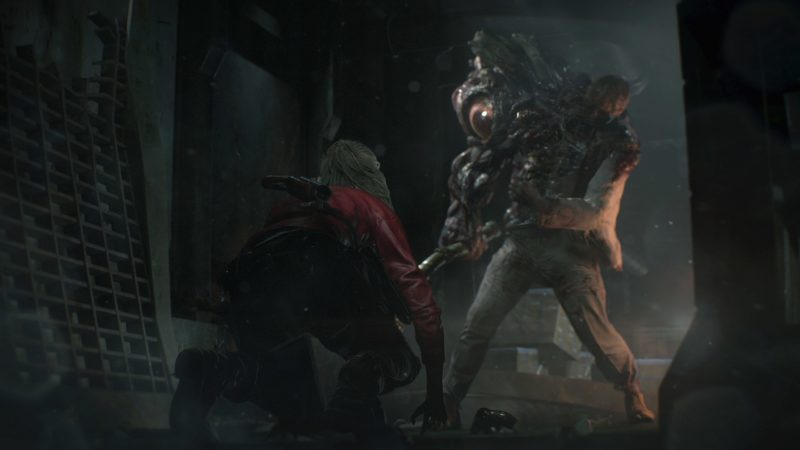
Are you kidding? Of course it’s on here. The 2019 remake of one of the most famous survival horror games of all time reinvents the franchise once more to blend together the classic survival horror designs with modern action-horror combat in a way that effectively and decisively cements what the series should be in the current generation of games. From its straight-outta-the-90s puzzle solving and item management to its smooth as butter aiming and simplistically complex combat, REmake 2 offers everything a fan could want and more. Retelling one of the most iconic stories in the series with new twists on what made it great, matched with some of the most competent dialogue and voice acting the series has ever had, turns it into a journey fans and non-fans alike can’t tear themselves away from. This all goes without even mentioning the stunning visuals thanks to Capcom’s new RE Engine and the use of photogrammetry scanning for the characters and some items. REmake 2 is one of those games you simply cannot miss. In a decade jam-packed with Resident Evil games (not counting ports, there were eight RE titles between 2010 and 2019) it’s incredible that the best one came at the very end.
On top of all of that, REmake 2 paves the way for the start of the next 10 years, as Resident Evil 3 Remake releases April 2020, delivering more of the same brand of survival horror. If RE7 pulled the horror genre’s eyes back on the franchise, REmake 2 cements it in a way that nothing short of a bomb could shake its foothold. It goes without saying that it’s the perfect way to cap off this decade, and one of the greatest entries in the series as a whole, bar none.
2019 Runner-Up: Blair Witch (Xbox One/PlayStation 4/PC)
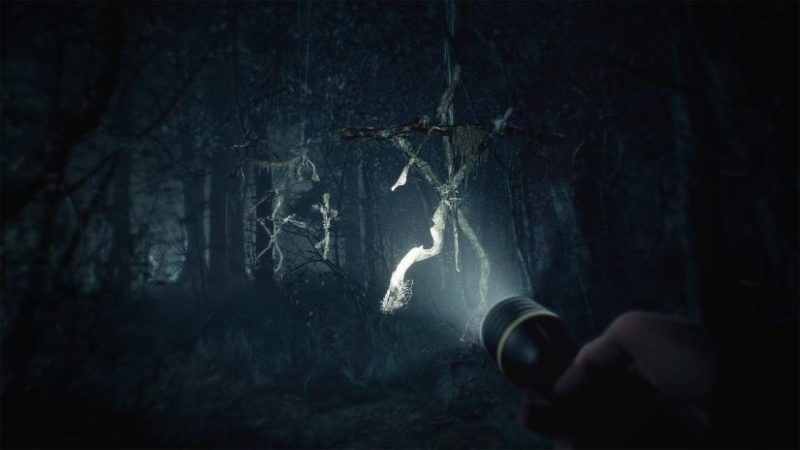
While Blair Witch might be a technical mess (I personally played it on Xbox One and oof), there’s no denying what an incredible horror experience it is. Haunting, eerie, and genuinely mind-bending on a scale one rarely sees in the “walking sim” horror genre, Bloober Team’s Blair Witch offers a dive into the darkness of Burkittsville’s Black Hills forest that will leave you paranoid and trembling. Never quite sure of your surroundings and haunted by visions of your past, this title matches the energy and commitment to adapting the world Alien: Isolation had for its origins with its source material, the original Blair Witch Project. If you liked titles like Slender, Blair Witch might be the ultimate night-walk in the woods horror experience of the decade. I eagerly await experiencing it again as an annual revisit among my favorite Halloween-time haunts.
There you have it, our list of the best (and scariest) horror games from this past decade. Some of these may chill you, some of them may thrill you — but no matter what your personal cup of horror tea is, our love for all things that go bump in the night is what brings us together. The next decade is already looking very bright, with two new Resident Evil titles lined up, Doom: Eternal, Dying Light 2, and Remothered: Broken Porcelain starting strong in 2020. Here’s hoping to ten more years of scares, and many more to come with you, dear readers.

